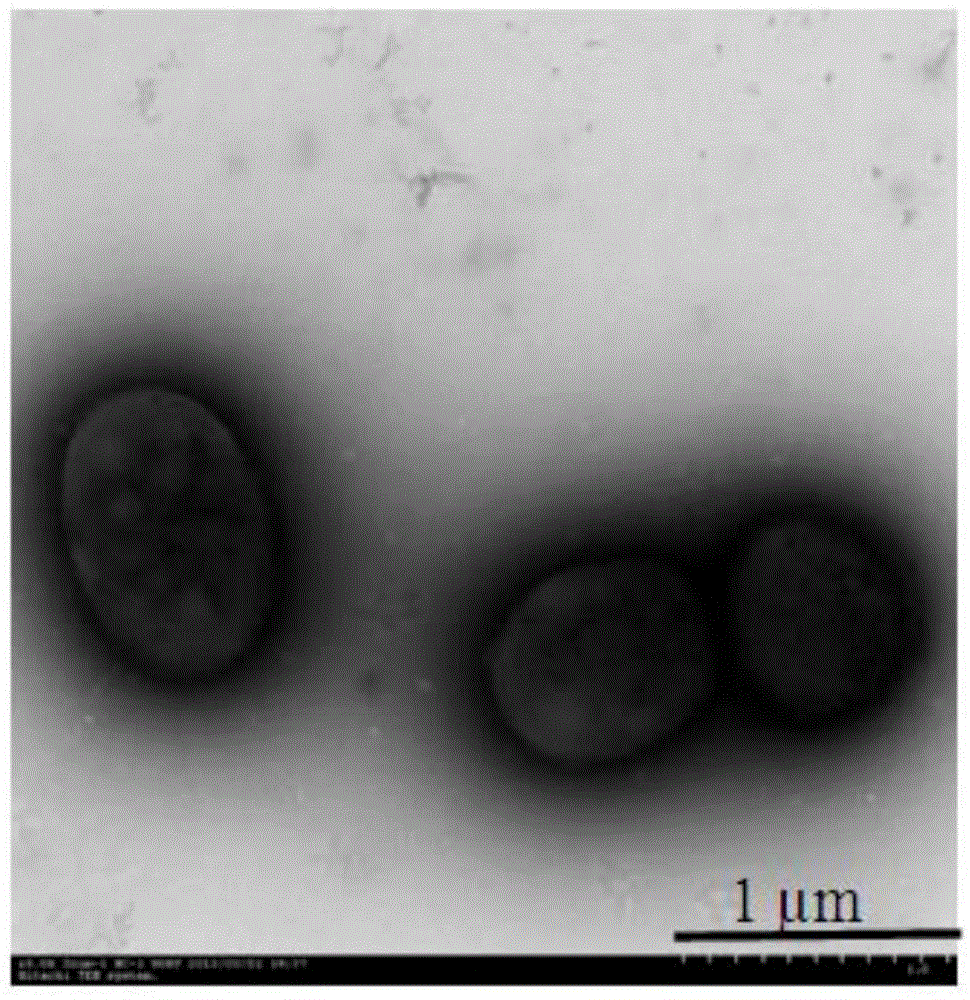Facultative anaerobic paracoccus arsenic oxydans and application thereof
A facultative anaerobic, arsenic oxidation technology, applied in the field of environmental microorganisms, can solve the problems of reducing crop yield and quality, endangering growth and development, rice poisoning effect, etc., and achieve the effect of reducing arsenic poisoning
- Summary
- Abstract
- Description
- Claims
- Application Information
AI Technical Summary
Problems solved by technology
Method used
Image
Examples
Embodiment 1
[0031] Embodiment 1: Separation, purification of bacterial classification
[0032] Take 5g Zhejiang Shangyu arsenic-contaminated rice soil sample in 60mL liquid medium, the medium composition is (g / L): 7.9g Na 2 HPO 4 ·7H 2 O, 1.5g KH 2 PO 4 , 0.3g NH 4 Cl, 0.1g MgSO 4 ·7H 2 O, vitamin solution 10.0mL (each liter of vitamin solution contains: biotin 2.0mg, folic acid 2.0mg, vitamin B 6 10.0mg, riboflavin 5.0mg, vitamin B 1 50mg, Niacin 5.0mg, Pantothenic Acid 5.0mg, Vitamin B 12 0.1mg, lipoic acid 5.0mg), trace element solution 5.0mL (each liter of trace element solution contains: triacetate sodium salt 1.5g, MgSO 4 ·7H 2 O 3.0g, MnSO 4 ·H 2 O 0.5g, NaCl 1.0g, FeSO 4 ·7H 2 O 0.1g, CoCl 2 ·6H 2 O 0.1g, CaCl 2 0.1g, ZnSO 4 ·7H 2 O 0.1g, CuSO 4 ·5H 2 O 0.01g, AlKSO 4 12H 2 O 0.01g, H 3 BO 3 0.01g, Na 2 m 0 o 4 0.01g, NiCl 2 ·6H 2 O 0.024g), 10mM HCO 3 - (NaHCO 3 ), 1mM As(III)(NaAsO 2 ) and 5mM NO 3 – (KNO 3 ). Before inoculation, the culture...
Embodiment 2
[0034]Embodiment 2: the identification of strain
[0035] (1) Determination of physiological and biochemical properties:
[0036] Table 1. Physiological and biochemical characteristics of strain SY
[0037]
[0038] Note: + indicates that it can be used; - indicates that it cannot be used
[0039] (2) Molecular biological identification
[0040] The bacterial total DNA was extracted by SDS-proteinase K, chloroform-isoamyl alcohol (24:1 volume ratio) extraction, and 0.6 volume isopropanol precipitation. Bacterial 16SrRNA general primers F27 and R1492 were used to amplify bacterial 16SrRNA, and obvious bands appeared around 1500 bp. After the PCR amplification product was recovered, the sequence was determined, and the obtained DNA sequence was input into GenBank. Sequences for comparative analysis. Combined with the results of the above physiological and biochemical characteristics and 16Sr RNA sequence, the strain should belong to the genus Paracoccus, named Paracoccus ...
Embodiment 3
[0042] Example 3: Identification of autotrophic arsenic oxidation characteristics of strain SY under aerobic conditions
[0043] The electron donor is As(III), and the electron acceptor is O 2
[0044] The composition of the medium is (g / L): 7.9g Na 2 HPO 4 ·7H 2 O, 1.5g KH 2 PO 4 , 0.3g NH 4 Cl, 0.1g MgSO 4 ·7H 2 O, 5mL trace element stock solution, 10mL vitamin stock solution. 10mM HCO was added to the culture medium 3 - (NaHCO 3 ) and 1mM As(III)(NaAsO 2 ). Each 10.0mL of vitamin solution and trace element solution (the formula of vitamin solution and trace element solution is the same as in Example 1), pH7.5; sterilized at 121° C. for 20 minutes, sodium bicarbonate and sodium arsenite were sterilized by membrane filtration, Then filled with high-purity mixed gas (N 2 / CO 2 =80 / 20) ≥ 1 hour, inoculate the bacterial suspension of strain SY (CCTCC NO: M2014456) to make the number of bacteria reach 10 8 / mL, static anaerobic culture at 30°C, and a control with...
PUM
 Login to view more
Login to view more Abstract
Description
Claims
Application Information
 Login to view more
Login to view more - R&D Engineer
- R&D Manager
- IP Professional
- Industry Leading Data Capabilities
- Powerful AI technology
- Patent DNA Extraction
Browse by: Latest US Patents, China's latest patents, Technical Efficacy Thesaurus, Application Domain, Technology Topic.
© 2024 PatSnap. All rights reserved.Legal|Privacy policy|Modern Slavery Act Transparency Statement|Sitemap



